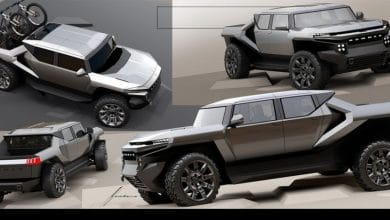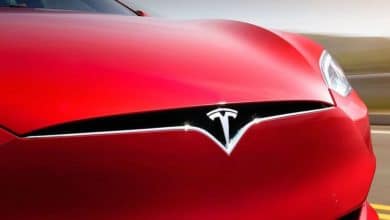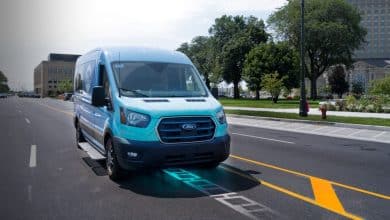2020 Volkswagen Atlas Cross Sport: when the Americans get involved

Vancouver, BRITISH COLUMBIA – In 2019, SUVs accounted for 41 percent of total Volkswagen product sales volume in North America. So it stands to reason that while the automaker remains loyal to its flagship vehicles, the Golf, Jetta and more recently the Arteon, marketing utility vehicles is essential to its survival on our continent.
What exactly is an Atlas Cross Sport? It’s basically a Volkswasgen Atlas (the automaker’s three-row mid-size SUV) that’s been shortened and slightly redesigned. It’s just a matter of recycling old ideas to improve sales.
The Atlas Cross Sport finally allows Volkswagen to enter the lucrative five-passenger midsize SUV category and compete with the likes of the Jeep Grand Cherokee, Ford Edge, Chevrolet Blazer, Honda Passport and Hyundai Santa Fe for a share of the pie in this hotly contested market.
We were invited to test it in a world premiere in Vancouver, British Columbia.
While technically identical to a standard Atlas, the Atlas Cross Sport features a visibly sleeker design, a receding roofline, a redesigned rear end and an all-new grille, which will be featured on the standard Atlas in 2021.
The other new feature is the addition of 4MOTION all-wheel drive as standard, even for the four-cylinder engine, a feature that its big brother will also inherit next year.
Prices range from $38,995 to $56,185 for the most equipped R-Line model. The Atlas Cross Sport is also the first Volkswagen vehicle to wear the new Volkswagen badge. The interior of the Cross Sport is identical to that of a standard Atlas, but it can be embellished with interior fittings unique to the model as well as its own body colors.
Dimensionally, the Atlas Cross Sport is 64 mm longer than a Jeep Grand Cherokee, but the same width as a standard Atlas. This makes it the most massive in its class, even longer than a Honda Passport. For our test drive, we received both four and six cylinder models.
Contents
Life on board
The integration of three-row SUV components – a technique also used in the Passport – makes the Cross Sport a surprisingly roomy and comfortable crossover with plenty of legroom and headroom in the back.
The color schemes offered for the model, such as red versus black on our test model, give the Cross Sport a slightly more modern and sporty look. We also liked the vehicle’s multimedia system and its clearly simple touchscreen interface that quickly responded to our commands. Android Auto and Apple Carplay compatibility are of course standard.
When it comes to cargo space, the Atlas Cross Sport is at the top of its class. Its trunk can hold up to 1,141 liters of cargo, making it an SUV with more cargo space than the Grand Cherokee and Ford Edge. Only the Honda Passport has more space (1,167 liters).
However, by lowering the rear seat to the floor, this Volkswagen is somewhat ahead of its Japanese rival, with a total cargo space of 2,203 liters versus 2,200 liters for the Honda.
Overall, the interior of the Atlas Cross Sport is nice and attractive, but as with most of Volkswagen’s recent products, we were disappointed by the quality of the materials used and the finish in general. The doors and tailgate are covered in heavy, hard plastics, and the lighting fixtures and some of the door trim components look cheap.
In short, we’ve seen better finishes in recent American and even Korean products. Ironic, though!
Technical
On the technical side, I could take our text on the Volkswagen Atlas and copy and paste it, since these two vehicles are identical. In fact, Volkswagen doesn’t even hide the fact.
However, the entry-level engine is a 2.0-litre turbocharged four-cylinder with 235 horsepower and 258 lb-ft of torque, while the better-equipped versions are powered by a naturally-aspirated 3.6-litre V6 that spits out 276 horsepower and 266 lb-ft of torque, an engine that is well known to Volkswagen. Each engine is mated to an eight-speed automatic transmission.
When asked about changes to the chassis, brakes and suspension, Volkswagen was adamant that the two Atlases are identical in every way, although they did say that the shocks have been slightly recalibrated to accommodate the reduced weight of the Cross Sport.
Unsurprisingly, it offers the same towing capacity as its brother, i.e., up to 5,000 lbs (2,267 kg) for the V6 (competitive in the segment) and 2,000 lbs (907 kg) for the four-cylinder. Volkswagen says that this towing capacity is standard, so there’s no need to add extra accessories to the vehicle to reach these figures.
Behind the wheel
The 2020 Volkswagen Atlas Cross Sport isn’t any more dynamic or faster than a regular Atlas, although its bodywork looks noticeably sportier.
It’s a generally quiet vehicle that feels solid on rough surfaces. This quality is attributable to the automaker’s MQB platform, which, although aging, is still used in a large number of vehicles at Volkswagen and Audi.
Where the Cross Sport disappointed us immensely was in its lack of agility and lamentable acceleration times, especially with the V6 engine. The engine lacks power and only delivers it at high revs, which is unpleasant in a vehicle that weighs over 4,000 lbs (1,814 kg).
What’s more, this engine’s fuel economy is not at all attractive. Volkswagen claims a combined average of 12.7 L/100 km, but we had a hard time staying below 14 L/100 km, which is almost comparable to a Dodge Durango SRT powered by a 6.4-litre V8. Phew!
At least the Durango performs well!
The same goes for its reflexes in general. In corners, the weight of the Cross Sport is felt, the rolling effect is very present, and there is no attempt on the part of the manufacturer to make it fun to drive. Its steering is lifeless and provides no feedback. In short, it doesn’t arouse in us any desire to drive it in a sporty way. It’s sluggish, sluggish and frustratingly understeers at the first turn.
The gearbox works well, except for a few hesitations during acceleration. In general, it does an excellent job of responding to our commands and maximizing available torque. However, things get worse when pushing the vehicle, where shifts are jerky, sometimes not wanting to deliver the desired gear.
There is hope, however. If towing is not a priority for you, we much preferred the four-cylinder engine despite its lower power output. Behind the wheel, this engine feels more responsive; its torque kicks in lower in the powerband and its lighter weight adds a bit of oomph to a fairly sanitized vehicle.
That said, don’t expect to get better fuel economy with this engine, which may save you an average of 1 L/100 km.
Conclusion
The 2020 Volkswagen Atlas Cross Sport is a 100% Americanized midsize SUV that has lost all the Germanic flare that made Volkswagen products stand out for a long time.
There’s no denying that it’s big, roomy, comfortable, relatively well equipped and can tow a good load. It does that wonderfully well.
But its questionable finish, clumsy handling and mediocre fuel economy (all engines combined) make it an ordinary vehicle instead of an excellent one. So unless you really want to drive a VW, we see few arguments in its favor to recommend it over a Passport or even a Santa Fe.












